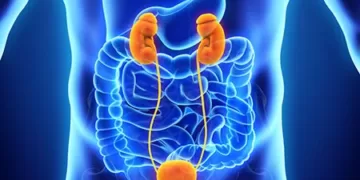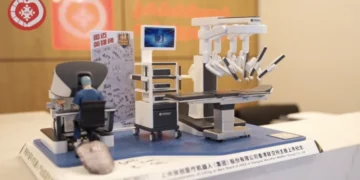Uterine fibroids or Myoma – a benign formation from the body of the uterus or the muscular membrane (myometrium) of the cervical wall. It is often referred to as fibromyoma because of its connective tissue content, or is also called leiomyoma.
Myoma is one of the most widespread pathologies (12-15% of gynecological diseases). A particularly high frequency of the disease is characteristic of the late reproductive and premenopausal period.
The so-called myomatous nodes are glomeruli braided with smooth muscle fibers. Most knots are usually a few centimeters or millimeters in diameter, although some knots are very large and weigh several kilograms. The largest knot, which is described in the world medical literature, weighed 63 kg.
All fibroid nodes are formed as a result of improper division of smooth muscle cells, based on this, all cells of the node are identical. Uterine fibroids are considered hormone-dependent tumors.
This is confirmed by the following factors:
- Receptors of sex hormones were found in the tumor formation;
- Fibroids develop in reproductive age, when estrogen levels are high;
- Fibroids regress after menopause when estrogen levels decrease.
- Some women develop fibroids in the period after menopause while taking estrogens;
- Leiomyomas convert estradiol to estrone;
- There are single and multiple forms of fibroids.
And according to the location of the nodes in the uterus, they distinguish:
- Submucosal or submucosal fibroids (submucosal) is characterized by the growth of nodes towards the uterine cavity;
- Interstitial, intramural (intramuscular) fibroids – when the nodes are located in the wall thickness, directly in the muscle layer;
- Subserous (subperitoneal, located under the serous membrane) fibroids, which are localized to the abdominal cavity directly under the sheet of peritoneum, may have a base of a smaller diameter than, in particular, at the node, therefore they are called “pedunculated nodes”.
- Cervical fibroids.
The most common interstitial fibroid. According to different authors, its frequency reaches 51-61%.
What causes the development of myoma?
The development of uterine fibroids is most often associated with hormonal changes in a woman’s body, mainly an increase in the concentration of estrogens. The latter is observed in young women of reproductive age. Against the background of a natural (physiological) decrease in estrogen after menopause, uterine fibroids may disappear on their own without any therapy.
The cause of the development of myoma can be:
- Genetic predisposition;
- Hormonal shifts;
- Adenomyosis;
- Inflammatory diseases of the genital organs;
- Metabolic disorders (diabetes mellitus);
- Chronic systemic diseases;
- Chronic stress state;
- Overweight and inactivity;
- The use of intrauterine contraceptives;
Fibroids can develop as a result of abortions or anorgasms (sexual dissatisfaction).
Main symptoms:
In 50% of uterine fibroids occur without symptoms. Such a course is typical mainly for single or multiple intramuscular and subserous myomas of small size.
Large fibroids always show up. A typical symptom is menorrhagia (excessive, heavy menstruation), pain in the lower abdomen and a feeling of heaviness. Menorrhagia is mainly characteristic of submucosal fibroids. Following the growth of fibroids, menstruation becomes stronger and longer, which often causes anemia. Pain in the lower abdomen and a feeling of heaviness are typical for subserous and intramuscular fibroids, especially with large nodes.
The pain most often appears during menstruation and it is squeezing, it can be cutting in case of torsion of the myomatous node (a relatively rare complication). Of the rare symptoms of fibroids, infertility and functional disorders in neighboring organs (for example, the bladder and rectum) can be noted.
How are they treated?
The tactics of treatment depends on the size and number of nodes, as well as severe symptoms and their intensity. In the case of small nodes that occur without symptoms, they turn to the tactics of monitoring the dynamics, especially if the woman is approaching the menopause period.
Surgery
Previously, the only treatment for fibroids was a hysterectomy (removal of the uterus). Recently, this method is rarely used due to the introduction of modern, low-traumatic and highly effective methods.
Endoscopic method
Myoma nodes are also treated with endoscopic intervention (removed), subserous nodes with laparoscopy, and when submucosal nodes are removed, hysteroscopy is used.
Embolization
There is a treatment for uterine fibroids by embolization. At this time, there is a cessation of blood flow through the arteries supplying myoma-embolization. Because of this, blood exchange stops at the myoma node, nutrition stops, and it will resolve over time. During this procedure, a catheter is inserted from the artery of the thigh into the artery of the uterus (sometimes a catheter and the uterine cavity are inserted into the blood vessel, the feeding node). In the found artery, the so-called. target, a special substance is injected that suppresses the blood vessel – causes embolization
The MMT Hospital offers the treatment of uterine fibroids using methods that meet international medical standards.










